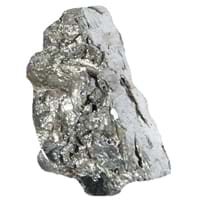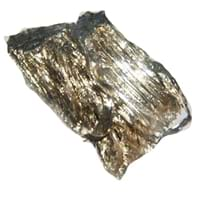Ytterbium vs Samarium
Periodic Table
Symbol
Yb
Sm
Group Number
Not Available
Not Available
Period Number
6
6
Block
f block
f block
Element Family
Lanthanide
Lanthanide
CAS Number
7440644
26
7440199
99+
Space Group Name
Fm_ 3m
R_ 3m
Space Group Number
225.00
2
166.00
6
Facts
Interesting Facts
- Ytterbium metal oxidizes rapidly if exposed to air.
- Ytterbium metal can dissolve quickly in Mineral acid.
- Samarium metals helps stimulating body metabolism.
- Samarium metals was 1st observed by Jean Charles Galissard de Marignac in Dydimia in 1853.
Sources
Found in Minerals, Mining, Ores of Minerals
Found in Minerals, Mining, Ores of Minerals
History
Who Discovered
Jean Charles Galissard de Marignac
Lecoq de Boisbaudran
Discovery
In 1878
In 1879
Abundance
Abundance In Universe
2 * 10-7 %
22
5 * 10-7 %
19
Abundance In Sun
~0.0000001 %
26
~0.0000001 %
26
Abundance In Meteorites
0.00 %
36
0.00 %
37
Abundance In Earth's Crust
0.00 %
33
0.00 %
29
Abundance In Oceans
0.00 %
37
0.00 %
40
Uses
Uses & Benefits
- Ytterbium metal is used in memory devices and tuneable laser.
- It is also used as industrial catalyst as the other catalysts are too toxic and polluting.
- Magnets of Samarium cobalt alloy are stronger than that of Iron and hence, they are used in microwave application.
- Samarium metal also used in optical lasers and infrared absorbing glasses and as a neutron absorber.
Industrial Uses
Automobile Industry, Chemical Industry
Aerospace Industry, Automobile Industry, Chemical Industry, Electrical Industry, Electronic Industry
Medical Uses
NA
NA
Other Uses
Alloys
Alloys, In Nuclear Reactors
Biological Properties
Toxicity
Highly Toxic
Slightly Toxic
Present in Human Body
No
Yes
In Blood
Not Available
0.01 Blood/mg dm-3
22
Physical Properties
Melting Point
824.00 °C
99+
1,072.00 °C
99+
Boiling Point
1,196.00 °C
99+
1,900.00 °C
99+
Appearance
Physical State
Solid
Solid
Color
Silvery White
Silvery White
Luster
Metallic
Lustrous
Hardness
Brinell Hardness
343.00 MPa
31
441.00 MPa
27
Vickers Hardness
206.00 MPa
33
412.00 MPa
24
Speed of Sound
1,590.00 m/s
99+
2,130.00 m/s
99+
Optical Properties
Allotropes
No
No
α Allotropes
Not Available
Not Available
β Allotropes
Not Available
Not Available
γ Allotropes
Not Available
Not Available
Chemical Properties
Chemical Formula
Yb
Sm
Isotopes
Known Isotopes
30
9
30
9
Electronegativity
Pauling Electronegativity
Not Available
1.17
40
Allred Rochow Electronegativity
1.06
33
1.07
32
Electropositivity
Pauling Electropositivity
Not Available
2.83
14
Ionization Energies
1st Energy Level
603.40 kJ/mol
99+
544.50 kJ/mol
99+
2nd Energy Level
1,174.80 kJ/mol
99+
1,070.00 kJ/mol
99+
3rd Energy Level
2,417.00 kJ/mol
99+
2,260.00 kJ/mol
99+
4th Energy Level
4,203.00 kJ/mol
31
3,990.00 kJ/mol
37
Electrochemical Equivalent
2.15 g/amp-hr
25
1.87 g/amp-hr
34
Electron Work Function
Not Available
2.70 eV
99+
Other Chemical Properties
Ionization, Radioactive Isotopes, Solubility
Ionization, Radioactive Isotopes
Atomic Properties
Atomic Number
70
99+
62
99+
Electron Configuration
[Xe] 4f14 6s2
[Xe] 4f6 6s2
Crystal Structure
Face Centered Cubic (FCC)
Rhombohedral (RHO)
Crystal Lattice
FCC-Crystal-Structure-of-Ytterbium.jpg#100
RHO-Crystal-Structure-of-Samarium.jpg#100
Atom
Number of Protons
70
99+
62
99+
Number of Neutrons
103
31
88
39
Number of Electrons
70
99+
62
99+
Radius of an Atom
Atomic Radius
176.00 pm
18
180.00 pm
14
Covalent Radius
187.00 pm
20
198.00 pm
13
Van der Waals Radius
242.00 pm
12
229.00 pm
20
Atomic Weight
173.05 amu
99+
150.36 amu
99+
Atomic Volume
24.79 cm3/mol
9
19.95 cm3/mol
19
Adjacent Atomic Numbers
Valence Electron Potential
50.30 (-eV)
27
44.80 (-eV)
37
Lattice Constant
548.47 pm
11
362.10 pm
33
Lattice Angles
π/2, π/2, π/2
π/2, π/2, 2 π/3
Lattice C/A Ratio
Not Available
Not Available
Mechanical Properties
Density
Density At Room Temperature
6.90 g/cm3
99+
7.52 g/cm3
99+
Density When Liquid (at m.p.)
6.21 g/cm3
99+
7.16 g/cm3
32
Tensile Strength
58.00 MPa
18
Not Available
Viscosity
Not Available
Not Available
Vapor Pressure
Vapor Pressure at 1000 K
Not Available
0.94 (Pa)
9
Elasticity properties
Shear Modulus
9.90 GPa
99+
19.50 GPa
34
Bulk Modulus
30.50 GPa
39
37.80 GPa
35
Young's Modulus
23.90 GPa
99+
49.70 GPa
37
Poisson Ratio
0.21
33
0.27
19
Other Mechanical Properties
Ductile, Malleable
NA
Magnetic Properties
Magnetic Characteristics
Specific Gravity
6.97
99+
7.52
99+
Magnetic Ordering
Paramagnetic
Paramagnetic
Electrical Properties
Electrical Property
Conductor
Conductor
Resistivity
0.25 nΩ·m
99+
0.94 nΩ·m
99+
Electrical Conductivity
0.04 106/cm Ω
38
0.01 106/cm Ω
99+
Electron Affinity
50.00 kJ/mol
21
50.00 kJ/mol
21
Thermal Properties
Specific Heat
0.15 J/(kg K)
36
0.20 J/(kg K)
31
Molar Heat Capacity
26.74 J/mol·K
25
29.54 J/mol·K
7
Thermal Conductivity
38.50 W/m·K
35
13.30 W/m·K
99+
Critical Temperature
26.30 K
7
Not Available
Thermal Expansion
26.30 µm/(m·K)
14
12.70 µm/(m·K)
30
Enthalpy
Enthalpy of Vaporization
128.90 kJ/mol
99+
166.40 kJ/mol
99+
Enthalpy of Fusion
7.66 kJ/mol
99+
8.62 kJ/mol
40
Enthalpy of Atomization
180.00 kJ/mol
99+
209.00 kJ/mol
99+
Standard Molar Entropy
59.90 J/mol.K
21
69.60 J/mol.K
15
|
||
|
||
|












